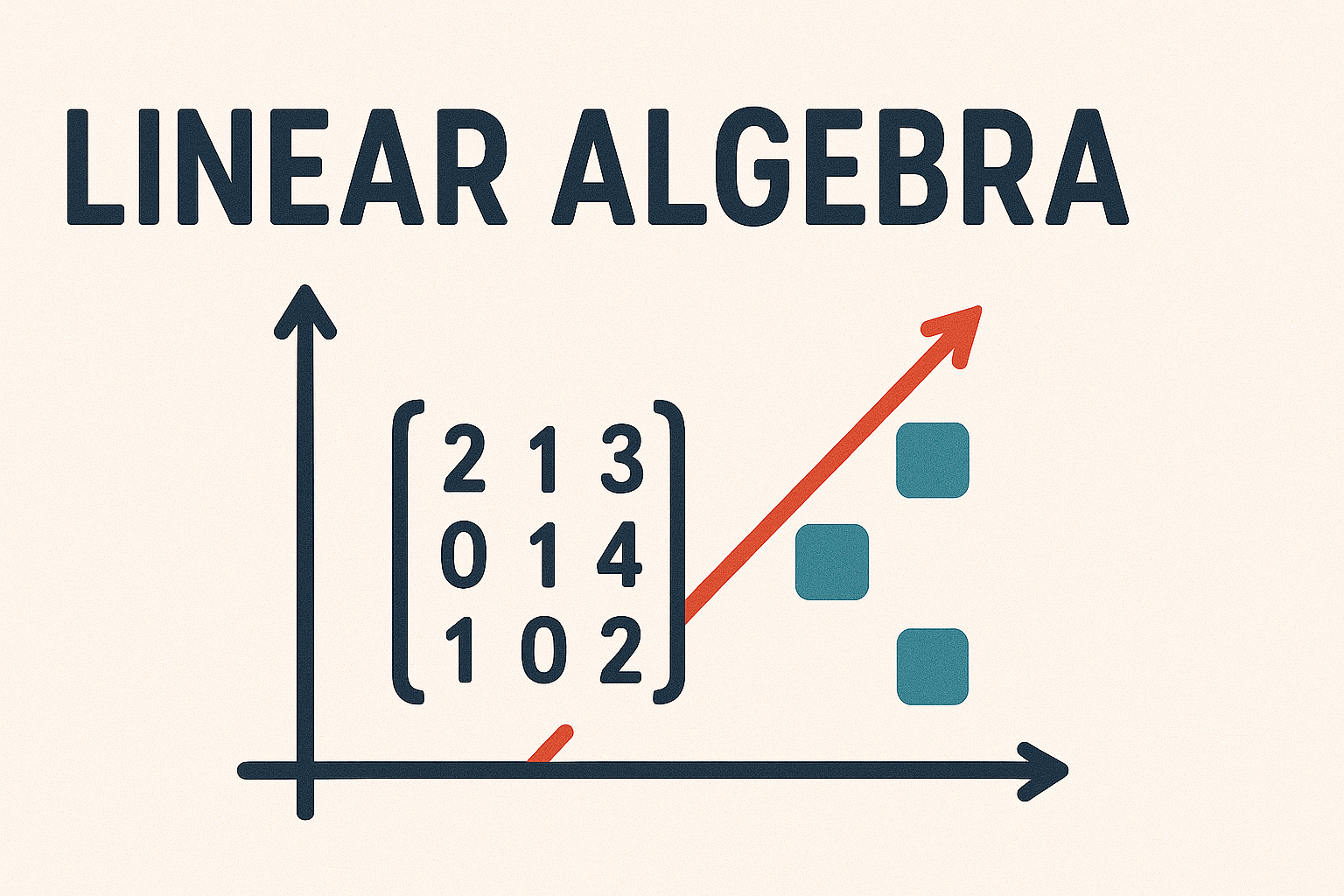6.3. Rotation, reflection and scaling#
Three of the most common geometrical linear transformations is rotation of vectors about the origin, reflection of vectors about a line and translation of vectors from one position to another.
6.3.1. Rotation#
Definition 6.6 (Rotation transformation)
The linear transformation \(Rot(\theta): \mathbb{R}^2 \to \mathbb{R}^2\) applied to the vector \(\mathbf{u}\) rotates \(\mathbf{u}\) by an angle \(\theta\) anti-clockwise about the origin.
Fig. 6.2 Rotation of the vector \(\mathbf{u}\) anti-clockwise about the origin.#
Consider the diagram in Fig. 6.2. Here we have the vector \(\mathbf{u}\) which is rotated by angle \(\theta\) anti-clockwise about the origin to give the vector \(\mathbf{v}\). To determine the linear mapping \(Rot(\theta): \mathbf{u} \mapsto \mathbf{v}\) we first consider the rotation from the vector \(\mathbf{e}_1\|\mathbf{u}\|\), which points along the \(x\)-axis and has the same magnitude as \(\mathbf{u}\), by angle \(\phi\) anti-clockwise about the original to \(\mathbf{u}=(u_x, u_y)\). Forming a right-angled triangle (the blue triangle) with the angle \(\phi\) and hypotenuse of length \(\|\mathbf{u}\|\) then
Doing similar for \(\mathbf{v} = (v_x, v_y)\) (the red triangle) we have
using the angle sum identities
then
Substituting equation (6.6) into equation (6.7)
Therefore the vector \(\mathbf{u}\) rotated by angle \(\theta\) anti-clockwise about the original is
Theorem 6.3 (Rotation in \(\mathbb{R}^2\))
The rotation of a vector \(\mathbf{u} = (u_x, u_y) \in \mathbb{R}^2\) anti-clockwise by an angle \(\theta\) is the linear transformation \(Rot(\theta): \mathbb{R}^2 \to \mathbb{R}^2\) defined by
The transformation matrix for rotation in \(\mathbb{R}^2\) is
The inverse transformation of rotating a vector anti-clockwise by an angle \(\theta\) is rotating clockwise by the same angle. This can be achieved by negating \(\theta\), since \(\cos(-\theta) = \cos(\theta)\) and \(\sin(-\theta) = -\sin(\theta)\) then
We could have also calculated the inverse of the rotation matrix to give the same result
Example 6.6
Rotate the vector \(\mathbf{u} = (2, 1)\) by angle \(\theta = \frac{\pi}{2}\) anti-clockwise about the origin.
Solution
The transformation matrix for this rotation is
Applying the transformation to \(\mathbf{u} = (2, 1)\)
This rotation is illustrated in the diagram below
Fig. 6.3 Rotation of the vector \(\mathbf{u} = (2,1)\) anti-clockwise by angle \(\theta = \frac{\pi}{2}\).#
6.3.2. Reflection#
Definition 6.7 (Reflection about a line)
The linear transformation \(Re\!f(\theta): \mathbb{R}^2 \to \mathbb{R^2}\) is the reflection of a vector \(\mathbf{u} \in \mathbb{R}^2\) about the line which passes through the origin and makes an angle of \(\theta\) with the \(x\)-axis such that the distance of the head of the image vector \(\mathbf{v}\) is the same as that of \(\mathbf{u}\).
Fig. 6.4 The reflection of the vector \(\mathbf{u}\) about a line that passes through the origin.#
The simplest reflection we can perform is to reflect a vector \(\mathbf{u} =(u_x, u_y)\) about the \(x\)-axis or \(y\)-axis (Fig. 6.5).
Fig. 6.5 Reflection of the vector \(\mathbf{u}\) about the \(x\) axis.#
To reflect about the \(x\)-axis we simply change the sign of the \(y\) co-ordinate
and the transformation matrix is
Note that here the line of reflection makes an angle of \(\theta=0\) with the \(x\)-axis.
The determine the reflection about a line that makes and arbitrary angle \(\theta\) with the \(x\)-axis we first perform a rotation by \(-\theta\) so that the line of reflection is on the \(x\)-axis (Fig. 6.6). This means we can then use equation (6.9) to reflect the rotated \(\mathbf{u}\) vector to give the vector \(\mathbf{v}\) (Fig. 6.7) before rotating by \(\theta\) so that the line of reflection is back to its original position (Fig. 6.8).
Fig. 6.6 Rotate by \(-\theta\).#
Fig. 6.7 Reflect about the \(x\)-axis.#
Fig. 6.8 Rotate by \(\theta\).#
Using composite transformations we can calculate the transformation matrix for reflection about a line
therefore
Using double angle formulae
then
Theorem 6.4 (Reflection in \(\mathbb{R}^2\))
The reflection of a vector \(\mathbf{u} = (u_x, u_y) \in \mathbb{R}^2\) about a line which passes through the origin and makes an angle \(\theta\) with the \(x\)-axis (i.e., \(y = \tan(\theta)x\)) is the linear transformation \(Re\!f(\theta) : \mathbb{R}^2 \to \mathbb{R}^2\) defined by
The transformation matrix for reflection in \(\mathbb{R}^2\) is
The inverse of reflecting about a line is to simply perform the reflection again, i.e.,
Example 6.7
Reflect the vector \(\mathbf{u} = (3, -1)\) about the line that passes through the origin and has gradient of 1.
Solution
Since the line of reflection has gradient 1 then \(\theta = \tan^{-1}(1) = \pi/4\) and the reflection matrix is
Applying the transformation to \(\mathbf{u} = \begin{pmatrix} 3 \\ -1 \end{pmatrix}\)
Fig. 6.9 Reflection of the vector \(\mathbf{u} = (3, -1)\) about the line that passes through the origin and makes an angle of \(\theta = \frac{\pi}{4}\) with the \(x\)-axis.#
6.3.3. Scaling#
Definition 6.8 (Scaling transformation)
The linear transformation \(S(\mathbf{s}) : \mathbb{R}^n \to \mathbb{R}^n\) where \(\mathbf{s} \in \mathbb{R}^n\) applied to the position vector \(\mathbf{u} \in \mathbb{R}^n\) scales \(\mathbf{u}\) so that the head is moved closer or further away from the origin.
Fig. 6.10 The scaling of the vector \(\mathbf{u}\) by the scaling vector \(\mathbf{s}\).#
The scaling of a vector \(\mathbf{u} = (u_1, u_2, \ldots, u_n) \in \mathbb{R}^n\) by a scaling vector \(\mathbf{s} = (s_1, s_2, \ldots, s_n)\) is achieved by multiplying the corresponding elements in \(\mathbf{u}\) and \(\mathbf{s}\).
Theorem 6.5 (Scaling transformation)
The scaling of a vector \(\mathbf{u} \in \mathbb{R}^n\) by the scaling vector \(\mathbf{s}\) is the linear transformation \(S(\mathbf{s}): \mathbf{u} \mapsto \mathbf{v}\) calculated using
The transformation matrix for scaling is
Since the inverse operation of scalar multiplication is scalar division then the inverse scaling matrix is
Example 6.8
Scale the point with position vector \(\mathbf{u} = (2, 1)\) by scaling scaling vector \(\mathbf{s} = (2, 3)\).
Solution
The transformation matrix is
Applying the transformation to \(\mathbf{u} = \begin{pmatrix} 2 \\ 1 \end{pmatrix}\)
Fig. 6.11 Scaling of the vector \(\mathbf{u} = (2, 1)\) by the scaling vector \(\mathbf{s} = (2, 3)\).#
